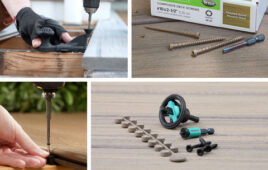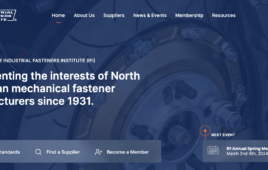
In the untreated condition, a threshold galling stress of 45.5 MPa (6.6 KSI), was measured. After the Kolsterising treatment, galling was eliminated. At a load setting of 842.5 MPa (122.2 KSI), the compressive yield strength of the material was exceeded, yet no galling was observed.
Screws threaded into blind tapped holes are commonly affected by galling and components made of stainless steel are especially susceptible. Stainless steel fasteners are widely used in corrosive environments for their superb corrosion-resistance but often suffer from galling and thread wear issues.
Galling is a type of mechanical wear caused by a combination of friction and adhesion between sliding surfaces typically under a compressive load — resulting in damaged threads, broken fasteners, weakened joints, and seized bolts.
Several factors can lead to galling, such as:
- Low-surface hardness
- Rough surface finishes
- The absence of lubricants
- Using finely-threaded fasteners or locking fasteners
But some of these features may be essential to fastener performance in certain applications. Therefore, it’s vital to balance a fastener’s properties accordingly. Typically, once a fastener has seized up from galling it’s impossible to remove without cutting the bolt or splitting the nut.
One solution is Kolsterising, a surface-hardening process for stainless steel, can significantly improve surface hardness and eliminate galling. Bodycote, currently the world’s largest provider of heat treatments and specialist thermal processing services, is hosting a free webinar to introduce the Kolsterising process and how to improve wear and galling resistance for stainless steel fastener applications. The event will be taking place on December 8 at 12 noon CET.
Galling resistance in stainless steel metal–on–metal applications can be achieved through Bodycote’s Specialty Stainless Steel Processes (S³P) while preserving the corrosion resistance properties of the base material. Kolsterising is a proprietary process developed to alleviate galling and thread wear issues by significantly increasing the surface hardness (typically >1 000 HV), improving the mechanical performance of such alloy systems while maintaining their natural corrosion resistance.
After treatment with the Kolsterising process, fasteners exhibit dramatically improved galling resistance, wear resistance, and fatigue strength. Kolsterising is a low-temperature diffusion process, not a coating, allowing for treated components to show no changes in dimensions or surface finish. The process is appropriate for a wide range of materials, including austenitic and duplex stainless steels, as well as nickel and cobalt-based alloys. The process also produces a hardened layer under the surface of the material, which improves surface integrity and provides more consistent fastener performance.
Even the smallest component can ruin the effectiveness of an assembly line or cause significant challenges, leading to costly downtime and maintenance issues. By partnering with Bodycote, manufacturers not only solve issues such as galling but also boost safety, quality, speed to market, and profitability.
To learn how Kolsterising boosts stainless steel fastener performance, click here to register for Bodycote’s webinar on December 8.







Tell Us What You Think!